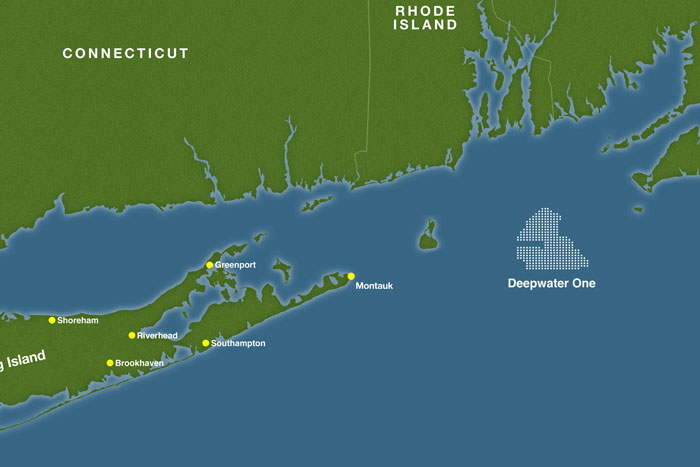New York’s Long Island Power Authority should approve the 90-megawatt South Fork Wind Farm energy project as an early step toward developing up to 2.4 gigawatts of offshore power for the state by 2030, Gov. Andrew Cuomo said in his annual address to state lawmakers.
It would be the single biggest commitment by a coastal state, and the South Forks project 30 miles off Long Island’s East End proposed by Deepwater Wind LLC faces stiff opposition from commercial fishermen and other critics. But contract negotiations that dragged out last summer are now close to final the LIPA board could vote on it this month.
Cuomo said the authority can “ensure it is developed responsibly and cost-effectively for all stakeholders.”
"New York's unparalleled commitment to offshore wind power will create new, high-paying jobs, reduce our carbon footprint, establish a new, reliable source of energy for millions of New Yorkers, and solidify New York's status as a national clean energy leader," Cuomo said. The state’s Offshore Wind Master Plan will be ready in 2017, and pave the way for the 2.4 billion-GW target, or enough electricity to power 1.25 million homes.
In that same time frame, the Cuomo administration has an ambitious target to a full 50% of New York state’s energy from renewable sources by 2030. Meanwhile, the potential closing of the aging Indian Point nuclear plant on the Hudson River in the early 2020s means the state’s biggest metro center will need power from other sources.
One could be the designated New York Wind Energy Area, nearly 80,000 acres extending east-southeast between the New York Harbor approaches. Statoil Wind US LLC, subsidiary of Norwegian energy major Statoil, in December bid a record $42.5 million for that lease, more than 2.5 times all the winning wind bids taken by the Bureau of Ocean Energy Management.
As with LIPA and Deepwater Wind, Cuomo said the New York State Energy Research and Development Authority can work with Statoil. “NYSERDA will also help ensure the needs of affected stakeholders like fishermen, maritime industries, coastal communities, and labor are met,” according to the governor’s office.
That is already off to a rocky start, with commercial fishermen led by the sea scallop fleet in a federal court in Washington, D.C., seeking an injunction against the BOEM lease to Statoil.
The Cuomo administration is stressing that “projects will be developed out of view from the coast,” positioning that may solve the objections of the tourism industry and oceanside property owners.
But in court papers fishermen say the BOEM permitting process is backward, without adequate assessments of environmental and economic impacts early. In the New York WEA, they see loss of scallop and squid fishing grounds to turbine arrays, tucked between two shipping traffic separation lanes for New York Harbor.
Montauk, N.Y., and Rhode Island fishermen likewise criticize the South Fork Wind Farm plan, seeing Deepwater’s proposed 15 turbines as a first phase toward denying them fishing space and impacting fish habitat. They point to disruption from setting turbine foundations and plowing cables into the sea floor among other construction activities.
"Gov. Cuomo, fishermen and others who are opposed to offshore windmills aren't opposed to them because of the view," the Long Island Commercial Fishing Association said in a statement after Cuomo’s address. “They are opposed because construction and operation of them will devastate the ocean and its sustainable resources.”





